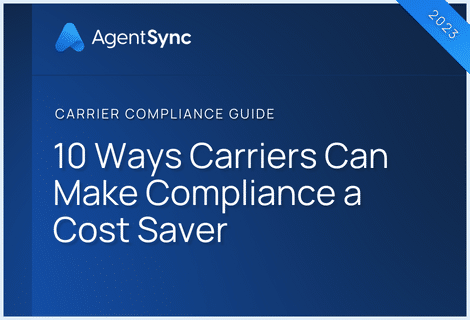

The concept of insurance is simple enough. Policyholders pay premiums and, in exchange, insurance carriers agree to compensate them for any losses that occur in an unexpected event, as long as they’re covered by the insured’s policies. However, insurance products aren’t typically one-size-fits-all, so how can consumers know that the products a carrier offers are fairly priced and readily available?
Because the business of insurance impacts the well-being of the general public, state governments are responsible for making sure insurance companies are acting in the best interest of their consumers. Market conduct regulation functions can be used to monitor insurers and protect consumers from any company that fails to operate in a way that’s both legal and fair to its policyholders.
What is market conduct regulation?
The goal of market conduct regulation is to verify that insurance companies and producers are operating in the marketplace in the way they promised their customers and key stakeholders they would. While market conduct regulation focuses mainly on an insurer’s compliance with laws, it can go hand and hand with financial solvency regulation. Like when problems uncovered in an investigation or market conduct examination hint at solvency concerns.
Most market conduct regulation occurs after an insurer’s products are in market, so it’s clear whether or not a company is offering what was promised to consumers.
The NAIC’s role in insurance market conduct regulation
The National Association of Insurance Commissioners (NAIC) plays a vital role in encouraging uniform market conduct regulation practices among the states. The NAIC’s Market Regulation Handbook serves as a guideline to conduct uniform and standardized market conduct surveillance and is updated annually by the Market Regulation and Consumer Affairs (D) Committee to reflect newly adopted NAIC model laws and regulations.
In 2002, the NAIC introduced the Market Conduct Annual Statement (MCAS) to provide regulators with a uniform market data collection system that could help states monitor the market conduct of insurance companies. Redesigned in 2011, the MCAS serves as a tool insurance regulators can use to help protect policyholders.
Examples of market conduct regulation
Now that we’ve defined market conduct regulation and provided a brief synopsis of how such regulations are set, let’s discuss how it’s actually accomplished. There are various market conduct regulation functions that can be performed both within and outside of a state insurance department. Some of these functions include:
- Rate and form reviews – Require insurers who plan to significantly increase premiums to submit their new rates to the federal or state government for review to help protect consumers from any unreasonable rate increases.
- Producer licensing requirements – Verifies an individual is legally allowed to sell, solicit, or negotiate insurance products in the United States, specifically on a state-by-state basis.
- Consumer assistance programs – Offer consumers direct assistance while navigating issues or questions involving their health insurance and health care providers.
- Investigations – Review any individual or organization suspected to be in violation of laws and regulations pertaining to the business of insurance to help safeguard consumers and eliminate unethical or criminal conduct in the industry.
And of course, market conduct examinations, which we’ll now discuss in more detail.
What is a market conduct exam?
A market conduct exam (MCE) is a deep dive into an insurer’s compliance and marketing practices that can help determine if a carrier is following the rules of the marketplace. Insurance departments use MCEs to systematically evaluate an insurance company’s behavior. There are two types of MCEs: comprehensive and targeted.
- Comprehensive MCE – Evaluates a majority (or all) of an insurance company’s operations using the organization’s documents and files. In a comprehensive MCE, an examiner may review a company’s:
- Products
- Sales and marketing practices
- Claims and settlement procedures
- Underwriting standards
- Complaint handling process
- Internal controls
- And more
- Targeted MCE – Evaluates only one (or a few) of an insurance company’s operational areas. Targeted MCEs are often performed after an initial market conduct analysis raises red flags about an insurer’s behavior or performance.
Who performs market conduct exams?
Both comprehensive and targeted MCEs are performed by an examiner from the state insurance department. Examinations can be performed either on-site at the participating insurer’s office, or at a different location, typically the state insurance department’s office, with the organization in question providing any documents the examiner requests for review.
What triggers market conduct exams?
As with most things in insurance, the states take different approaches when it comes to conducting MCEs. While some states only perform an MCE when a carrier has received a certain amount of complaints lobbied against it, others take a more proactive approach and conduct annual MCEs. The data from these annual exams is then submitted to the NAIC to create the MCAS.
When an MCE is triggered the state insurance department will initiate the examination by issuing a call letter detailing the scope and timeline for the exam. The examiner will then request certain documentation that the insurer must provide for review during the exam.
What happens after a market conduct exam?
After an examination, the examiner prepares a report of their findings and the insurer has the opportunity to respond. If the report concludes that an insurer violated the law or insurance regulations, then the responsibility falls to the state insurance commissioner to take action. Action can include suspending or revoking the insurer’s license to conduct business in the state, monetary fines, and restitution for affected policyholders such as refunding premiums or paying additional money towards claims settlements.
Best practices to prepare for a market conduct exam
Whether your state conducts MCEs on a regular annual schedule or not, it’s best you’re prepared so that if and when the call does come, you aren’t left scrambling. Here are a few tips and best practices insurers can follow for a smoother exam process.
- Keep all files and documents organized – The examiner is likely going to request records and documents that you’ll need to provide in order for the exam to be conducted, so make sure you know where to find them. If your organization is still relying on vintage technology – aka spreadsheets and paper files – to store important information, it may be time to update to a more secure and efficient data record system.
- Bake compliance checks into everything you do – Imagine having effortless compliance verification before, during, and after a producer sells. You’d never have to worry about missing a Just-in-Time appointment or a producer falling out of compliance– both of which are regulatory violations that could trigger an MCE. AgentSync’s automated compliance management solution has built-in compliance checks to give carriers peace of mind when it comes to avoiding regulatory missteps.
- Automate tasks to reduce human error – Human error, oversights, and mistakes could raise market conduct red flags that subject a carrier to examination. The more human hands you have in your workflows, the more prone to costly human error, oversights, and mistakes your organization is. Automating manual tasks can help reduce a carrier’s risk of human error and increase workflow efficiencies. Talk about a win-win!
For most carriers, the main goal of market conduct examinations should be to behave well enough in the marketplace to avoid them. Of course, that’s not always feasible, which is why it’s important for all insurers to understand the MCE process and be prepared for an audit. The best defense against an impromptu MCE is an automated compliance solution that can eliminate compliance-related complexities and keep your carrier on the right side of the law when it comes to market conduct regulation.
If you’re ready to streamline distribution channel management and compliance at your organization, see how AgentSync can help you keep up with producer and agency data, and stay on top of state regulatory requirements.

